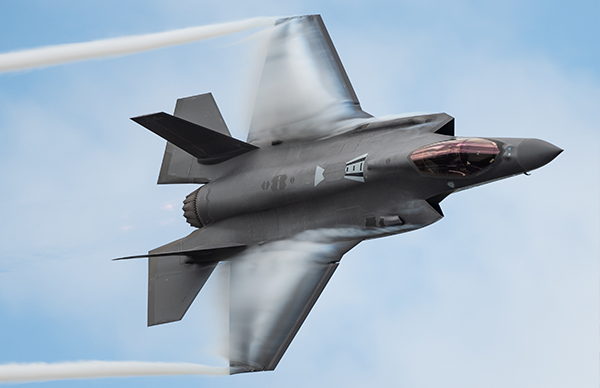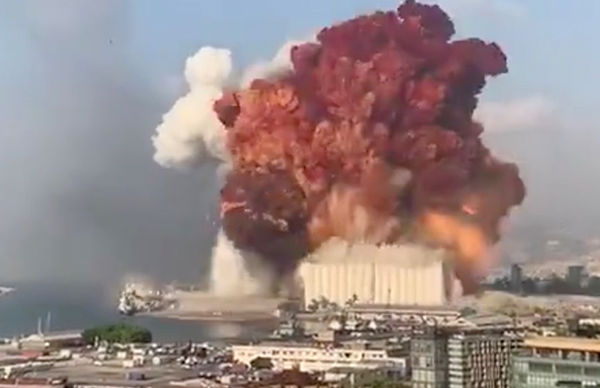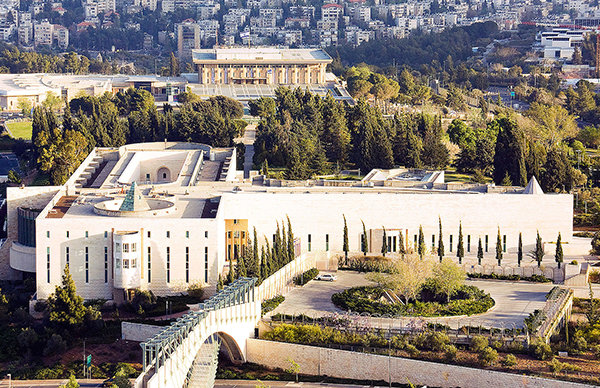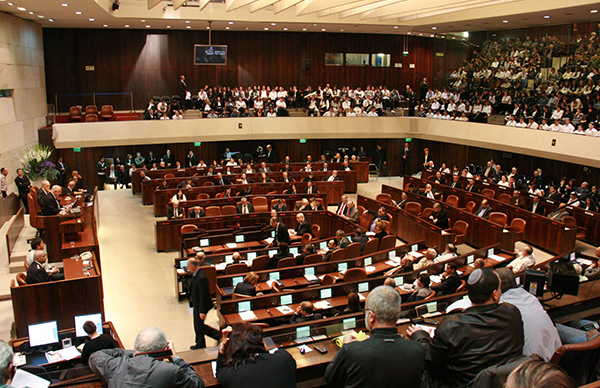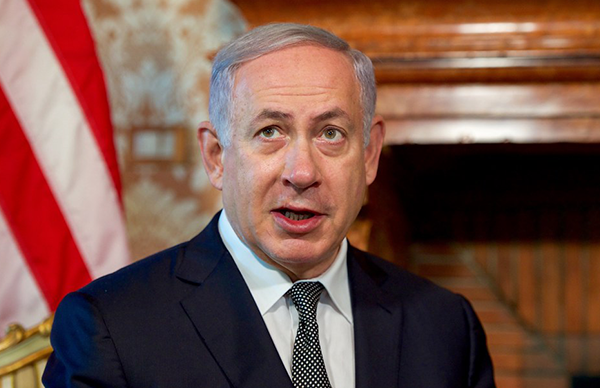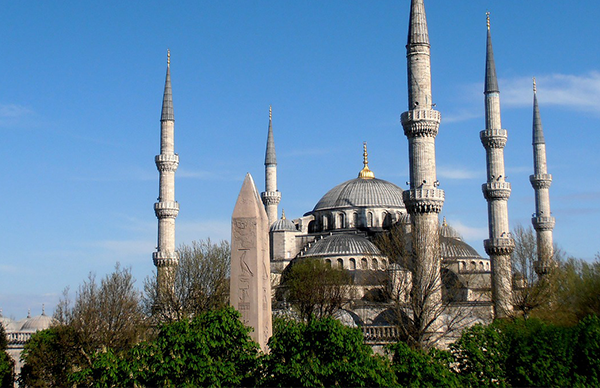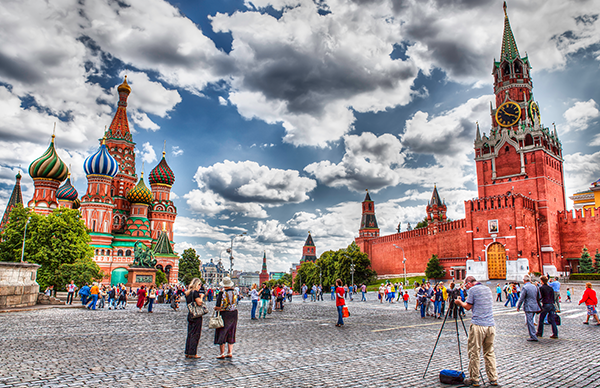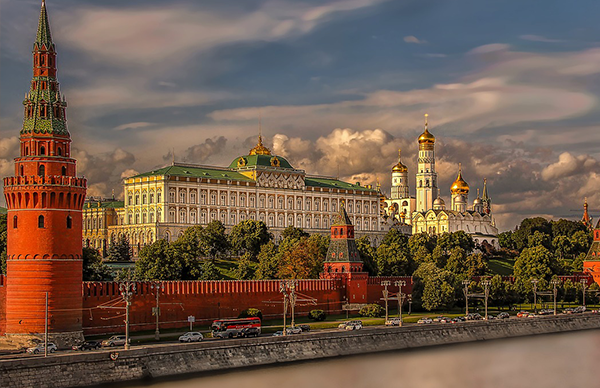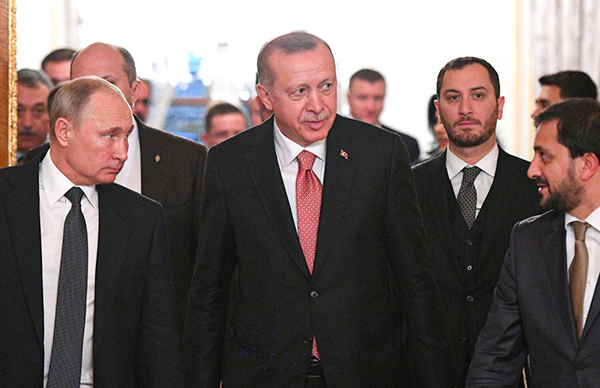By Dr. David Wurmser
August 7, 2020
Part 1: Lebanon-What happened?
Part I of this series will review the facts of what we know has happened and an analysis of the horrific catastrophe in Beirut on August 4 itself. Part II will focus on the ramifications.
A few minutes after 6PM on Tuesday August 4, a fire broke out, the cause of which the Lebanese government has said might be because of a welding accident, in hangar 9 of Beirut’s port. Videos from the first moments afterwards show black smoke, indicative of a grease or other material fire. A few minutes later, a second fairly large explosion (assuming there was a small explosion which caused the first fire) expanded the blast area into hangar 12 and set the stage for the third and final explosion about 20 minutes after the first and about 30 seconds after the second.
What we know about the blasts
We have no idea what caused the first fire or blast, if even there was a first blast since none of the videos so far provided captured those first few seconds. But the remaining smoke was moderate and blackish, consistent of an industrial fire. It appears some small munitions, or some claim fireworks, began erupting soon after causing a whitish-grey smoke to be added. One film, apparently taken from an adjacent building (no information on the fate of the photographer, although highly unlikely he survived), shows crackling and popping occurring before a much larger second blast. This could be fireworks, as the government has claimed.
The second explosion was much more significant, and produced thick whitish-grey “dirty” smoke, consistent with some high explosives and even rocket fuel. Several witnesses of the second explosion insisted at first they heard airplane engines, but closer examination by analysis of several videos and the commentary by eyewitnesses themselves on the ground ultimately place the source of that roaring sound within the fire, further suggesting that rocket engines were being set off rather than planes flying overhead.1 Smaller continuing explosions persisted, with white flashes seen in and above the building. While fireworks could still not be ruled out, after the second explosion, the thick dirty grey smoke, whooshing airplane-type sound rather than predominant whistling, the absence of a spectacular airborne display of streamers and sparkling explosions spraying in every direction as would be consistent with firework explosions (since the roof had already been blown off the building at that time) – all seem to suggest rockets, mortars and missiles of some sort rather than fireworks were igniting. About 20 seconds after the second blast, the escalating fire dramatically ramped up, as did the resulting pace of white flashes in and above the building, which seem to be consistent with small-caliber explosives, such as mortars and rockets.
In short, something much more explosive, which produces white-grey dirty smoke and a sound like a roaring aircraft engine, produced the second explosion, of which we know nothing else at this point since the government is sticking closely to the “fireworks” explanation entirely. That second explosion seemed to set in motion what eventually triggered the final and third explosion. In fact, it is clear that the Lebanese government It is determined to not have the cause of this second explosion known or discussed.
About 28 seconds after the second blast, during which the flames and white flashes intensified, more “humming” and a roaring crescendo can be heard in the videos suggesting missile engines roaring, and then a final round of white-flash explosions popping off which was followed suddenly by a massive eruption – the third and final explosion. Still frame photos of the exact moment of the massive explosion showed the entire warehouse – this time hangar 12 – simultaneously and uniformly detonated.
The magnitude of the blast was strong enough, with enough high humidity, to produce a perfect Wilson cloud. While some have said it might be a fuel air blast, the condensation halo vaporized instantly, as is consistent with a Wilson cloud rather than fuel air explosion. Also, the cloud did not have the initial yellow flash consistent with a fuel-air blast. It was in fact, a pressure wave according to physicists, not a shock wave, as a fuel-air bomb would produce.2 Thankfully, since the death toll would have been astronomically higher were it a shock wave.
Later analysis of the blast effects indicated that it was equivalent to a 1.1 kiloton explosion – comparable to a small tactical nuclear blast about 1/11th the size of the Hiroshima 12-15 kiloton nuclear blast.
Ahead of the Wilson cloud was a massive pressure wave spreading throughout the city, and rising behind the Wilson cloud is a broad and towering column of reddish brown thick smoke, generally indicative of a concentrated and high-quality bomb-grade ammonium nitrate explosion. Fertilizer-grade ammonium nitrate tends to explode with more blackish, oily smoke.
The Lebanese government claims that over 2700 tons of Ammonium Phosphate was stored in Hangar 12, confiscated from a Moldovan registry ship, the Rhosus, in 2013. This stated magnitude would be almost exactly equivalent to the sort of explosion the 2700 tons (2.7 kilotons) of ammonium nitrate would produce, assuming that it is of the highest-grade military explosives and not fertilizer grade (the conversion rate to TNT of the highest-grade Ammonium Nitrate is 0.4 %), namely 1.1 kilotons.3 Nitropril, which was seen to be marked on some of the bags in images which have since appeared, is the densely porous prilled (granularized) grade of ammonium nitrate used for the explosive version, not fertilizer.4 So this is also consistent with bomb-grade ammonium nitrate being the cause of the last massive blast.
It must be noted though, the ammonium nitrate cannot combust by itself. Indeed, the markings on ammonium nitrate containers in the US have the following safety label: “May explode under confinement and high temperature, but not readily detonated. May explode due to nearby detonations.”5 And indeed, Lebanon’s interior minister, Mohammad Fahmi, also noted this on August 6.6 This is why getting to the bottom of the second explosion is so critical, and why it is so important to press the Lebanese government on producing more information on the materials that caused this second explosion – which were likely munitions and missiles. Without it, there would never have been a catastrophe.
As a final note, there have been commentators claiming that the final blast looks more like a fuel-air blast from a shaped explosive charge, namely HMX (Octagen, or C4H8N8O8) missile fuel that accidentally detonated. The survival of the grain silos is raised as a sign that the charge which exploded was shaped upward – again consistent with a warhead pointed toward the sky. The smoke, however, of the third explosion was a dark reddish-rust color typical of an ammonium nitrate explosion, and the vast layer of dust left on everything in the area is typical residue of ammonium nitrate. About the grain elevator: it survived on the far side, but not the side facing the explosion. It is quite possible that the grain in the silos absorbed the kinetic energy of the blast, much like sand or water do. Still, this alternative explanation cannot be ruled out, nor could it be ruled out – indeed it is likely — that such high explosive material used for rocket fuel of extremely high-intensity explosions was the source of the second explosion (which appears to have been in hangar 9, which was whiter and quite substantial in its own right – certainly consistent with a missile blowing up), and was the ongoing source of the escalating fire, roaring and trigger for the third, massive explosion.
The last and third blast destroyed central Beirut, damaged buildings 10 miles away, and sent pressure waves 20 miles away onto the surrounding Lebanese mountains. It was heard in northern Israel, and even clearly in Cyprus 125 miles away. Hundreds were killed, several thousand wounded and 300,000 left homeless as a result of the blast.
Some effects of the blast are only beginning. Eighty percent of Lebanon’s grain supply (Lebanon’s strategic reserve) was incinerated, and the port through which most of Lebanon’s imported food arrived has been rendered dysfunctional. Lebanon relied on imported food for 90% of its needs, so this is a disaster which yet will unfold. Beirut port is the entry point for 70% of all imports of all goods. So Lebanon has a grave logistical challenge – few operating docks — in finding a structure to bring seaborn loads of goods and foodstuffs.
Hangars 9 and 12
Regarding hangars 9 and 12, Lebanese are universal in their belief that Hizballah rules the critical areas of the port as a government within a government. As head of the program on studying terrorism in Israel’s Herzliyah Center, Mordechai Kedar has noted that there are many videos of Hizballah officials bragging about their “Fatima Gate,” which is a nickname given their independent, clandestine port structure in Beirut completely out of the control and visibility of the Lebanese government.7 In those videos, it is noteworthy that Hizballah bragged that “the Fatima Gate” in Beirut port is where they can come and go at will, import and export freely, and smuggle unharassed, not only without interference by customs authorities, but often without their knowledge.
Kedar believes that the Hangar 9 and 12 structures are the noted “Fatima Gate.” They are closest to the water, meaning they are the most prime warehouses for unloading ships without being detected by satellite or aerial reconnaissance, and very close to the exit of the port as well. Lebanese port workers themselves regarded Hangar 12 as an off-limits Hizballah zone.
These two warehouses, being the closest to the waterline, were clearly the most sought-after structures for rapid movement and transfer, not long-term storage. Indeed, the port authority asked that the ammonium nitrate be removed to more distant storage sheds, but those requests were met with silence.
The Ship
The Lebanese government, which has been diligent and fast in releasing information which builds its narrative (outlined below) has said nothing of the provenance of the ostensible fireworks, or other information in connection with the first blast/fire and the second blast. It has focused exclusively on the final blast – and with determination has suppressed discussion of anything other — leaving us no information with which to analyze regarding everything that preceded the final blast.
The official version is that a ship, the Moldovan registry Rhosus, was sailing in 2013 from the Crimea to Mozambique to deliver fertilizer or explosives for mining. The ship encountered mechanical difficulties – although some conflicting reports said it lacked the funds to pay the Suez Canal fees – and had to take to port in Beirut. The Lebanese government saw the papers were not in order and confiscated the ship. The owner of the ship, the Cyprus-based Russian oligarch Igor Grechushkin, abandoned the ship and the cargo and left the crew stranded. Ship crews are disturbingly often abandoned, but much less so with cargos.
The ammonium nitrate on the ship was offloaded and placed in hangar 12. After seven years of legal wrangling and bureaucratic back and forth, the cargo remained stored in hangar 12 until it exploded on Tuesday. The crew was stranded on the ship for several months longer, but eventually was flown home.
The ship was leaky, and some reports are that it sunk in port, and others report it set sail from Beirut, and that the ship has been seen since.
What we know about the ship is the official Lebanese government’s version. It has not been independently verified. And indeed, it took only a day or two, however, before Lebanese journalists, began accessing records and former officials, and began uncovering additional information of interest, although a good bit of it is impossible to independently verify. The popular and respected Lebanese journalist, Marcel Ghanem, on his MTV show, Sar el-Waet, on August 6, interviewed a retired prominent, perhaps chief, inspector of Beirut port whom had been involved in the whole Rhosus affair since the beginning, and was the one debriefing the crew. He tale was riveting, but again, would need independent verification.
Notably, the interview could cost the former inspector his life, so it is rather surprising that he openly recounted what he revealed. He claims he was the inspector who personally interviewed the ship captain, and the story he tells of the ammonium nitrate is shocking and worth summarizing here:
* The ship’s captain, Boris Prokoshev, said the ship was not seaworthy, and nor was he. The inspector noted the captain was consistently drunk. But both the captain and the inspector understood that is why this ship or captain were chosen. No respectable ship owner or captain would do this mission. The whole crew were desperados essentially. In short, there was something untoward about the very nature of the shipment from the start.
* When the ship passed Bosphorus, the Turkish transit authorities stopped it because they worried the ship was not seaworthy. Upon boarding, they inspected and saw the shipment, at which point they moved to seize it to prevent Bosphorus passage as a grave hazard. The head of Bosphorus maritime transit then received a phone call from President Erdogan’s officer saying that Erdogan personally requests it be released and allowed Bosphorous passage. The head of Bosphorus transit was so upset by this — fearing it could be a terror ship that could even be used in Istanbul — that he tweeted publicly his disapproval of passage as a self-protective maneuver.
* The ship, being unseaworthy, used its “SoS” status as cover and made straight for Beirut, not Cyprus which was just as close along its track, but where its owner was and where the ship had previously been flagged (before Moldova) after Bosphorus. Once in Beirut, the official story was established that the ship cannot continue, and the cargo was essentially bought out by unknown people. That is why the ship owner — an oligarch who did not build his reputation on being a pushover — never launched a court challenge over the confiscation of the ammonium nitrate by the Beirut port.
* The Beirut port inspector office had his team launch a quiet investigation as to where the money came from for the purchase. They concluded it led back to Iran.
* Also, receiving no cooperation from the government on the details of the ammonium nitrate, they brought in a chemist to see what grade ammonium nitrate they were dealing with. The tests showed it was the highest possible grade; not the sort used in fertilizer, and not even a common level of quality for mining explosives.
* They, the port authority and others started getting ever more nervous about this, suspecting foul play, and many times asked for further information about the shipment, not only in terms of asking it to be removed, but also information about it. Their letters and queries were always met with the cold silence that suggests “Don’t go there.”
In short, the Lebanese government is focused exclusively on the ammonium nitrate, ignores completely the causes and sources (likely munitions and missile fuel) of the second explosion which was the essential component in turning a small accident into a vast human tragedy. To reinforce its narrative, it has taken the odd tale of a unseaworthy ship crewed by derelicts and spun a tale solely of incompetence, not nefarious behavior, as the only story worth contemplating, which lays the bulk of the blame on …. The previous government under Saad Hariri.
Part 2: Lebanon–So what happens now?
Although the first hour or so after the blast produced wild stories – including the theory of Israeli Frogmen – both the Lebanese government and Hizballah – both of which are beholden to Syria and Iran — very quickly and decisively asserted there was no Israeli involvement in the blast.
The Lebanese government reaction
Careful study of all the available videos and freeze-frames confirms the Lebanese government account of the final blast, although there is a loud silence about what preceded it. In addition to the escalating behavior of the fires and explosions at the scene clearly emanating from their internal dynamics, there are also no external objects entering the immediate site. There is no video out there of what caused the very first fire or explosion – which was relatively minor. By early evening, less than an hour after the explosions, even al-Mayedin media, the mouthpiece of Hizballah, made clear there was no Israeli attack.
Instead, the government built a very different narrative, focusing on the climate of prevailing criminal negligence. To carry through this narrative, it has ordered anyone possibly connected to be placed under house arrest. It also on Wednesday (August 5) opened a commission of inquiry to determine the cause and culpability in this disaster.
The Lebanese government insists on limiting the parameters of public discussion to the scandal of corruption and incompetence over the last 7 years by previous governments regarding the stranded nature and storage of the ammonium nitrate.
It is suppressing discussion – not successfully, however — of all other inquiry into the ammonium nitrate ownership, nature or storage as irrelevant, as is any mention of the preceding fires and explosions, what was stored there that caused those preceding fires and explosions, and whose cargo was it. So for the Lebanese government, the ship and government incompetence is the entire story.
It is perhaps not entirely coincidental. This is the most self-protecting narrative possible. The international investigation into the 2005 mass-bomb murder of Prime Minister Rafiq Hariri was set to issue its final report this weekend, in which they have already revealed the Syrian government and Hizballah – as well as Iran – were clearly to blame. Blaming this new, worst calamity to have ever befallen the Lebanese people on incompetence and corruption lays the blame on the government for four of the seven years of the cargo saga … that of assassinated Rafiq Hariri’s son, Prime Minister Saad Hariri. Vectoring all the blame for this overarching event on the younger Hariri, the government could have reasonably expected that it would deflate all the anger and possible street unrest which could have been triggered by the release of the international assassination inquiry.
To add emphasis, on August 6, a small hire-a-thug mob attacked Saad Hariri’s convoy and stoned several of its cars while blaming Hariri personally for the corruption and blast.
Conspiracy theories emerge
Within about 36 hours of the blast, a radical-left Jewish organization marked by its animosity toward Israel, Tikkun Olam published an article by Richard Silverstein, that laid the blame for the catastrophe on a sloppy and uninformed Israeli raid on an Hizballah arms cache, being unaware that it was located next to a massive ammonium nitrate stash. He cited only the abandoned first-hour rumors that it was an Israeli frogman attack, which the Israeli paper Haaretz reported not as fact from Israeli sources, but a dutiful second-hand reporting of what some Lebanese sources were saying in those first minutes.
Within about 48 hours, photos began appearing showing various assortments of objects hurtling toward the doomed site at the time of the final, massive explosion. One showed a missile with an afterburning trail plunging down – although a) the missile was out of scale, b) missiles in terminal descent do not burn fuel and have no afterburn trail, and c) the image is a miniature SCUD, not any known missile from a Western arsenal and d) the original video is available and does not have that object in it.8 In fact, a close examination of other videos showed a deliberately fast-framed bird passing through, and others simply photoshopped images onto existing videos which in the original clearly had no foreign objects.
In short, about 48 hours after the blast, an escalating trend, perhaps campaign, of photoshopped images began appearing to make it look as if this was the result of an external attack by a foreign power – likely Israel.
Similarly after about 48 hours, Iranian propaganda outlets were saying that the United States had done this intentionally as well.
Lebanese government hints at shifting its story
By Friday (August 7), the Lebanese government began hinting that it is shifting its narrative. Until then, the government and Hizballah were disciplined in messaging that it was all the result of corruption, which implicitly blames the previous Hariri government for the tragedy. But on August 7, Michel Aoun, the president, hinted that the Lebanese government is examining the possibility that the affair was caused by an external force, either by a missile fired or by a bomb planted by an external power.9
If the reigning Hizballah-Syrian Quisling government, and its Syrian and Iranian patrons shift to this new narrative, it is a sign of increasing nervousness. Indeed, there are clear signs the Lebanese people have little patience for this, and small demonstrations – dispersed with tear gas — have already begun.
Moreover, another dangerous sign of possible deflection emerged late in the night between August 6 and 7: the attempted penetration of Israel by a Hizballah drone (it was shot down).
So, what now?
Almost universally, reports from Lebanon describe a population transitioning from shock to fury directed at the government and at Hizballah. Lebanon had already been in crisis, having lost nearly 100 billion in wealth over the last months. The previous government several months ago was ousted over street riots demanding its resignation because of the banking collapse which had eliminated these large amounts of personal assets. The Lebanese already before the blast understood the new government was merely the result of a game of musical chairs, and not a real change, and were thus already gripped by a despairing public sentiment.
In the coming days, several Lebanese who in the past managed to galvanize into the streets mass demonstrations to eject Syria from Lebanon on March 14, 2005 (the “March 14th movement”) have declared that “this now is war. Enough.” The leaders of the Lebanese opposition (to the government) initiative worked with the Vatican, through the Maronite Patriarch Boutrus el-Rahi, and have the buy-in of other Christian denominations and Sunni, Christian and some Shiite leaders for the initiative, the terms of which are the following:
1. Full implementation of UN Security Council Resolutions 1559, 1680 and 1701. The upshot is Syrian withdrawal and Hizballah dismantlement completely. Trying to avoid the incomplete results of 2005, they are hoping to make these resolutions legally binding under Chapter 7 of the UN Charter.
2. Restoration of the neutrality pact which governed Lebanon’s relations with the whole region in the 1950s and 1960s. This is explicitly stated in agreement already reached between various Christian and Sunni leaders to be “neither East nor West,” and – “neither Nasrallah nor Erdogan.” In other words, they reject Iran and Turkey alike.
3. Restoration of the May 17, 1983 Lebanese-Israeli non-Aggression agreement which followed the 1982 “Operation Peace for Galilee” Lebanese-Israeli war, which resulted in the PLO’s expulsion under Yasir Arafat from Beirut to Tunis. This is not a peace treaty between Israel and Lebanon, but it is a non-belligerence arrangement that returns the border to the situation it was before the entry of the PLO after the 1967 war (the “good fence” arrangement). The United States, as part of the Deal of the Century last year, attempted to negotiate a new Israeli-Lebanese non-belligerence agreement, and Foreign Minister Katz even met with his Lebanese counterpart, Foreign Minister al-Khalifa, but these efforts ultimately were impossible under the current state of domination of Lebanon under Iran, Syria and Hizballah.
French President Macron on his visit to Beirut to express support for the devastated city was heavily exposed to the street sentiments in Beirut, which was a demand to remove the Syria-quisling government and get rid of Hizballah. Macron promised all French aid would flow directly to the people, and not pass through Hizballah, the Syrian-Quisling and Iran-backed government for profit and skimming. He ultimately promised that he would present a “new national pact” for Lebanon shortly – a sign that he has adopted the emerging Lebanese opposition initiative.
At this point, there is no visible Shiite “official” buy-in to this agreement, because any sanctioned Shiite official is there at the indulgence of Hizballah. It is likely that we may see several Shiite clerics, who have long suffered in quiet discomfort, view this as an opportunity to finally assert their independence and come out in public to split from the Hizballah-sanctioned leadership.
Lebanon is at a tipping point, and in fact already had been before the horrific blast. This emerging initiative, which also has its roots before the blast, appears to represent a major push by various Lebanese sectors of society to push it over the tipping point into a rout of Hiziballah and Syria, and overall of their patron, Iran. At the same time, they are putting Erdogan on notice that even the Sunnis have had enough of foreign intervention and have no more desire to become a pawn of Turkey than to remain a pawn of Iran.
The Lebanese government, however, is attempting to build the narrative that this is a result of the endemic corruption and incompetence of previous administrations, such as the al-Hariri government. It thus hopes to follow the suit of the Iranians, who two weeks ago singed a salvation agreement with the Chinese (salvation for their government, not nation). Namely, the Lebanese government will likely attempt to launch a major rebuilding of the port and city under Chinese auspices and financing, and present themselves, Hizballah, Iran and China — rather than perpetrator of Lebanon’s woes – instead as Lebanon’s savior from the previous government’s catastrophic failure and reliance on the West. They fail, of course, to note that ever since 2008, when Hizballah launched what essentially was a military coup, Lebanon was no longer independent, but operating entirely under Hizballah. Syrian and Iranian tutelage, with nothing happening – especially not in the port of Beirut – without their knowledge and sign-off. In short, any Lebanese government was a fiction since 2008 to cover the real Iranian-Syrian-Hizballah power.
And they fail, of course, to note that Hizballah was keenly aware of what mixing ammonium nitrate, a detonation and population concentration would produce. They knew it would be a mini-nuclear bomb level explosion killing thousands. In fact, Hizballah, indeed Nasrallah himself, threatened explicitly in 2018 to do to Haifa in Israel exactly what just happened in Beirut, saying lobbing a bomb onto ammonium nitrate stores in Haifa with its population of 800,000 would be tantamount to a nuclear attack.10
As such, as hard as they are working to build their narrative, the Lebanese population with the exception of the few benefitting from Hizballah rule personally, are not buying it…at all.
What we are witnessing may indeed be the beginning of the end for Hizballah and the Syrian-Iranian Quisling government – either the official one, or the real one which has been dominating Lebanon with a steal grip since 2008.
It is imperative for Western powers to get to the bottom of the ship story, to establish that hangars 9 and 12 are indeed Hizballah’s “Fatima gate,” to expose what the suspicious materials were that led to the second blast (since it indicates an arms shipment), and finally, whether the ammonium nitrate was not in fact, a story of incompetence and a “stranded” cargo, but a Hizballah stash from which it could send ammonium nitrate deliveries to their operatives around the world, such as those caught in 2015 in London with 3 tons of ammonium nitrate trying to set up a number of bomb-making factories,11 those caught in Cyrpus with 9 tons of ammonium nitrate,12 and those caught in Germany with an unreported amount of ammonium nitrate.13
1: https://twitter.com/lizsly/status/1291484564116901910?s=12
2: https://www.wired.com/story/tragic-physics-deadly-explosion-beirut/
3: https://twitter.com/ArmsControlWonk/status/1290740483098984448
4: http://www.oricaminingservices.com/download/file_id_21273
5: https:/www.moonofalabama.org/2020/08/Beirut-blast-wrap-up.html
6: https://twitter.com/davidadaoud/status/1291010910514024450?s=12
7: See https://www.youtube.com/watch?v=p5dfGlKlOyY and https://www.yousfalawnah.com/
8: https://www.snopes.com/fact-check/beirut-explosion-cause-missile/
9: https://www.ynet.co.il/article/BySF2Iq11w
10: https://www.jpost.com/middle-east/nasrallah-threatened-to-blow-up-israel-with-same-chemicals-as-beirut-blast-637582
11: https://www.timesofisrael.com/uk-said-to-have-covered-up-fact-it-foiled-2015-hezbollah-bomb-plot-near-london/
12: https://apnews.com/9b2fba18477b4f9098dd3da95fb0ff2b
13: https://www.timesofisrael.com/mossad-gave-berlin-intel-on-hezbollah-ops-on-german-soil-ahead-of-ban-report/
